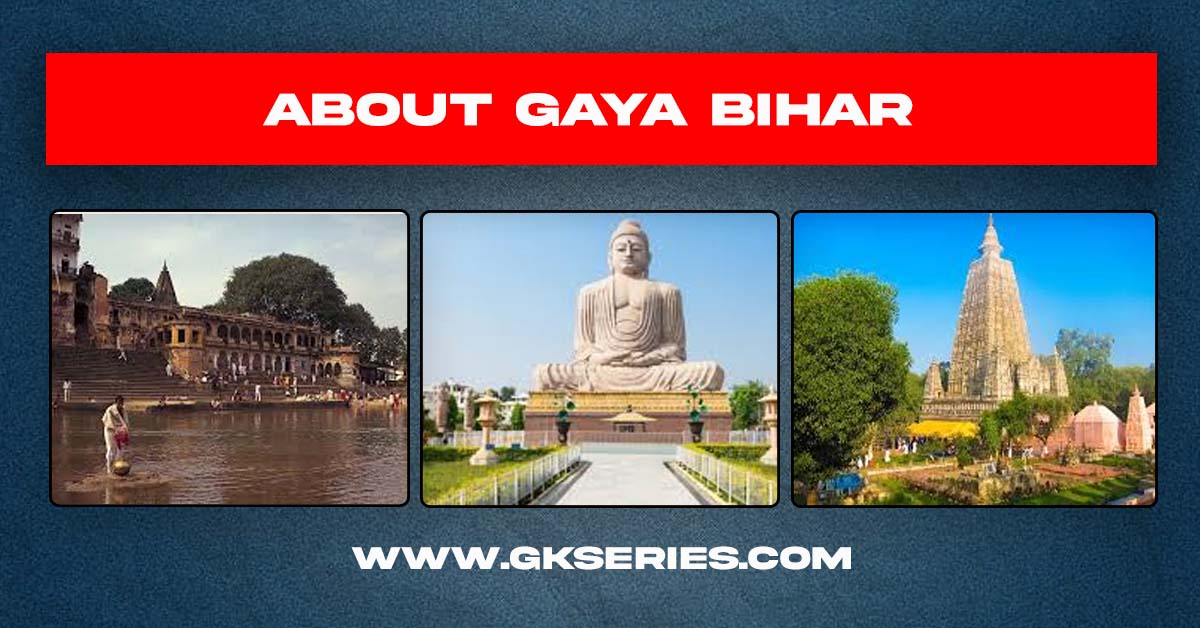
In this article, we provide comprehensive information about the geography, history, population, and top tourist destinations of Gaya. Gaya, a historic city in Bihar, is a place of immense spiritual significance and ancient heritage. Situated along the banks of the Falgu River, Gaya serves as a sacred destination for both Hindus and Buddhists. It is particularly renowned for the Mahabodhi Temple in Bodh Gaya, a UNESCO World Heritage Site, where Lord Buddha achieved enlightenment beneath the Bodhi Tree. Hindus flock to Gaya to perform *pind daan*, a ritual honoring their ancestors, especially at the Vishnupad Temple, which is said to contain Lord Vishnu’s footprint. In addition to its religious importance, Gaya showcases Bihar’s cultural and culinary diversity, featuring local delicacies such as *litti chokha* and sweet *tilkut*.
| About: | Gaya was passed on to the Britishers after the battle of Buxar in 1764. Gaya initially formed a part of the district of Behar and Ramgarh till 1864. It was given the status of independent district on 3rd October in the year 1865 comprising of Gaya, Aurangabad, Nawada as its Sub-Divisions. Gaya, along with other parts of the country, won freedom in the year 1947. In course of time, Aurangabad and Nawada Districts were carved out of original Gaya in the year 1973 and Jehanabad was carved out of Gaya district on 1st August, 1986. In recent past, Arwal district was carved out of Jehanabad district in August 2001. Subsequently, in May 1981, Magadh Division was created by the Bihar State Government with the districts of Gaya, Nawada, Aurangabad and Jehanabad. Presntly, Magadh Division comprises of 05 Districts namely, Gaya, Aurangabad, Nawada, Jehanabad and Arwal |
| History: | According to modern scholars, the Kikata kingdom from Rigvedic period was located at Gaya, Bihar. Gaya is an ancient city, with a Buddhist documented history dating back to the 6th century BCE when the sage Gautama Buddha attained enlightenment at Bodh Gaya, 16 km (9.9 mi) from the modern city. Even before this time, Gaya was a place of pilgrimage for people from around the world. The fame of ancient Gaya derived from the account in the Ramayana of the god Rama coming here to the banks of Phalgu River (called the Niranjana), accompanied by his wife and younger brother, to offer pind-daan for their father Dasharatha, for the moksha of his soul. In the Mahabharata, Gaya is referred to as Gayapuri. Gaya flourished during the Maurya Empire (321–187 BCE), which ruled from the city of Pataliputra (adjacent to modern Patna) over an area that extended beyond the Indian subcontinent. During this period, Gaya witnessed the rise and fall of many dynasties in the Magadha region, where it occupied an important place in cultural history over some 2,400 years between the 6th century BCE and the 18th century CE. The city’s cultural significance began with the dynasty founded by Sisunaga, who exercised power over Patna and Gaya around 600 BCE. Bimbisara, fifth king of the dynasty, who lived and ruled around 519 BCE, had projected Gaya to the outer world. Having attained an important place in the history of civilization, the area experienced the influence of Gautama Buddha and Bhagwan Mahavir during the reign of Bimbisara. After a brief period under the Nanda dynasty (345–321 BCE), Gaya and the entire Magadha region came under Mauryan rule. Mauryan Emperor Ashoka (272–232 BCE) embraced and promoted Buddhism. He visited Gaya, and built the first temple at Bodh Gaya to commemorate the Buddha’s attainment of supreme enlightenment. |
| Country : | India |
| State: | Bihar |
| District: | Gaya |
| Language: | Hindi, English Spoken: Magahi |
| Population: | 470,839 |
| Literacy rate: | Average literacy rate of Gaya city is 81.63 percent of which male and female literacy was 86.51 and 76.16 percent. |
| Major Attractions to Visit: | Vishnupad Bodhgaya Animesh Lochan Chaitya Bodhi Tree Chankramana Ratnagarh 80 ft Statue of the Buddha Mahabodhi Temple at Bodhgaya Archaeological Museum Thai Monastery Sujata Garh / Sujata Village Dungeshwari Temple / Dungeshwari Hill Baba Koteshwarnath Temple Architecture of Koteshwarnath Temple Dungeshwari Temple / Dungeshwari Hill |





